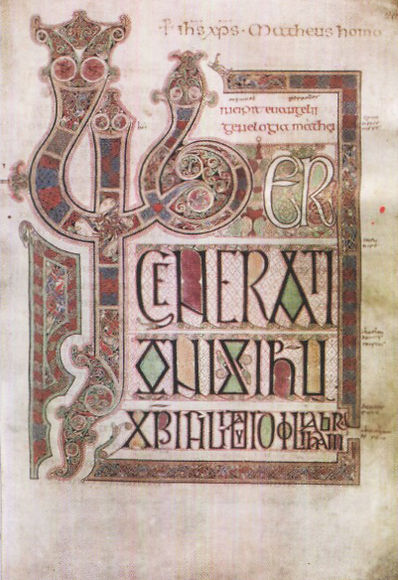Communicating through Graphic Design
Chapter 1: Birth of Writing
Throughout history, people have had the need to communicate, to record events, and to indicate ownership.
Early cave paintings indicated where there was drinking water, buffalo, adequate hunting, scenes of epic battles and more. Then cuneiform writing was invented as a "better" means of communication. Reeds were pressed into wet clay in patterns but were read "as the ox plows" so starting in either the top left or top right and reading back and forth. It was more than a little confusing not knowing where to begin but it was a start in written communication.
In Mesopotamia in the fourth century BCE, the Sumerians invented a form of picture-writing. They used pictographs, pictures that stand for words or ideas, along with a basic numbering system, to label sacks of food.
The alphabet we used today in North America, evolved from a set of 22 basic pictographs used in Phoenicia, an ancient, sophisticated culture in the Middle East. (*Side note: When you are sounding out a word, its called "phonics" and when you use that device in your hand, its called a cell phone... all paying homage to the Phoenicians and their contribution to modern communication.) The Greek alphabet was developed from the Phoenician one and was later used in the formation of the Roman alphabet. The Roman alphabet became the model for all the languages of Western civilization.
It was the Emperor Charlemagne who, between 742-814 AD that standardized writing and reading. Charlemagne is responsible for left to right reading, punctuation, standardized spelling and pronunciation, capital letters at the beginning of sentences, and as such, ordered all religious texts to be re-written so they could be standardized as well.
After the fall of the Roman Empire, the West became lawless and learning declined. Learning continued only in monasteries, where educated scribes painstakingly hand lettered books that were then illustrated with brightly painted images. These books were called illuminated manuscripts.
1-06: Cave paintings like this one might have been used in ancient ceremonies. What words and images do people use in ceremonies that you know? (Prehistoric pictographs, Texas, ca. 7000 BCE)


1-07: Early alphabets were made up of pictures that stood for words or ideas. Which pictures remind you of letters? (Sumerian tablet with pictographs)

Example of cuneiform writing. This was done "as the ox plows" so right to left then left to right and so forth but didn't have any consistency with the starting point so sometimes it would be in the right and sometimes it would be in the left.

1-08: The Phoenician alphabet, first used in about 1050 BCE, is an ancestor of our alphabet. How many of its letters are the same?


1-09: Square capitals like these were used for carved Roman inscriptions. Notice the letters precise, regular shapes. (Latin inscription of a date)
1-10: This container may have been a teaching toy: twenty-six letters of the Etruscan alphabet are carved into it. Which letters look familiar to you? (Vase in the form of a cock, ca. 650-600 BCE)
1-11: Hand-lettered manuscripts were usually portable, making it easier to spread religious teachings. First page of the genealogy of Christ. (From the Book of Kells, Irish illuminated manuscript, ca. 800 CE)
READING LINKS:
-
A Brief History
